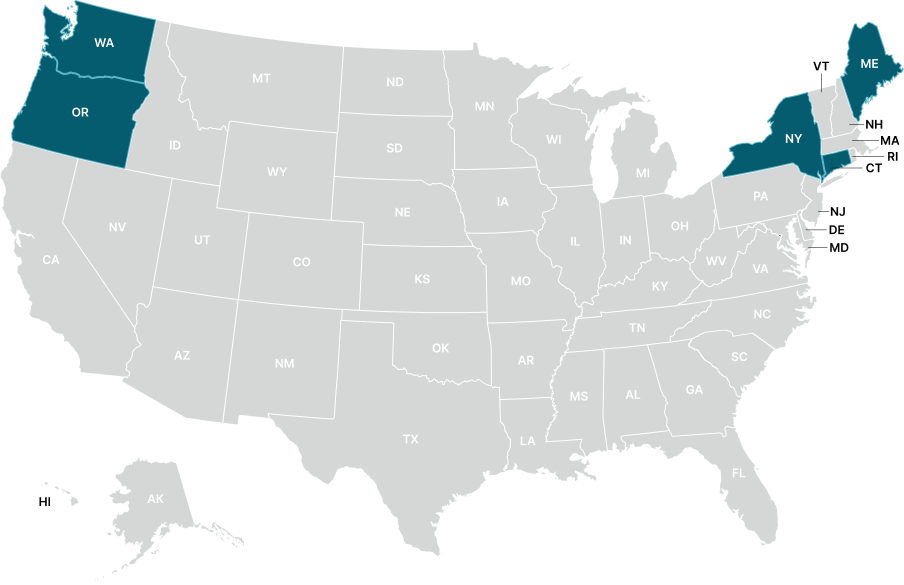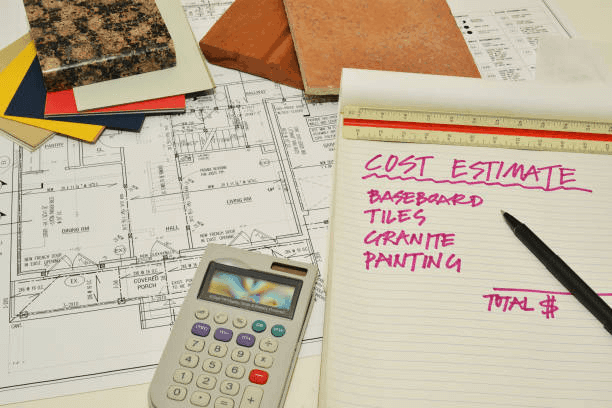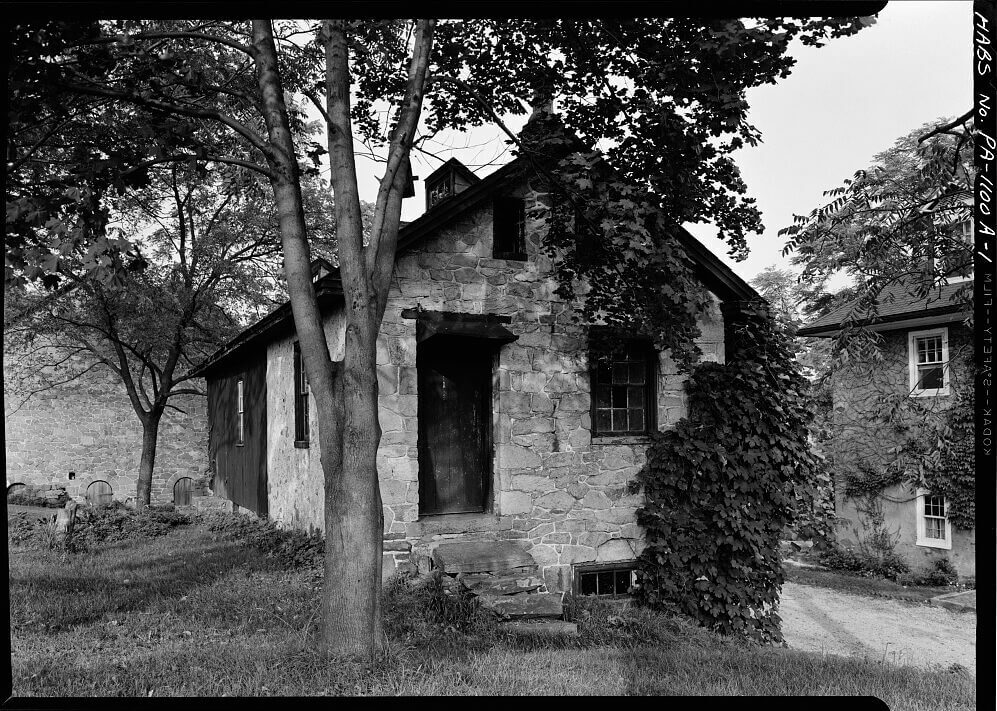

What to Know About Building an ADU
Are you feeling cramped with adult children or in-laws living at home? Do you want to keep your elderly parents close by, while still giving them independence? Maybe you need a new home office, a workshop, or even want to earn some passive income?
There's one solution for all of these scenarios: an Accessory Dwelling Unit (ADU) that provides the extra space you need.
What is an ADU?
ADUs go by many names, such as granny flats, in-law suites, or backyard cottages. These compact structures often include a kitchen, bathroom, and living area.

Whatever you call it, essentially any ADU is a small home built on the same lot as a larger, primary house.
ADUs can be detached houses, like a small cottage, or they can be attached to the main house, like a garage conversion. These units are designed to provide extra living space without requiring a separate piece of land.
Perfect for housing families, renting out, or hosting guests, ADUs help maximize the potential value and usage of your property. Since they sit on existing properties, ADUs also offer a cost-effective way to add additional housing options to your community.
The Importance of ADUs Today
Accessory dwelling units are more important now than ever because they can provide more housing options in areas where space is limited and housing costs are high. By building an ADU, homeowners can create additional living spaces without the need for additional land.
These residences are becoming critical in the fight against the housing crunch. States are increasingly recognizing the benefits of ADUs in providing much-needed housing options.

California has led the charge in embracing ADUs, and other states are following suit. Oregon, Washington, Connecticut, Maine, and New York are now implementing policies to promote and streamline the construction of ADUs, making it easier for homeowners to add these versatile units to their properties.
ADUs can provide more financial benefits to homeowners. Renting out an ADU can generate extra income, helping to offset the costs of homeownership.
For families, an Accessory Dwelling Unit can offer a convenient and cost-effective way to care for elderly relatives or a private living space for adult children.
Some ADUs, like those from Mighty Small Homes, support more sustainable living. Built using Structural Insulated Panels (or SIPs, for short), they use less energy and resources than traditional homes.
By making use of existing infrastructure and reducing the need for new development, ADUs have affordable housing alternatives.
Types of ADUs
Offering a range of benefits, Accessory Dwelling Units can be customized based on the homeowner's available space, financial constraints, and specific requirements.
Common Types of ADUs | ||
|---|---|---|
DetachedThese are standalone units separate from the main house. They look like small cottages and are often placed in the backyard. The Modern and Cottage models adapt well for this use. | ||
AttachedAttached to the main house but has a separate entrance. Can be an extension built onto the side or back of the home. This is not to be confused with a Duplex, which similarly offers a separate entrance. | ||
Above-GarageThese units are built above an existing garage. Provides additional living space without taking yard space. Our Carriage model adapts well for this use. | ||
Garage ConversionCreated by converting an existing garage into a living space. Makes use of the existing space. | ||
Each type can be chosen based on the available budget, needs, and space of the homeowners.
Choosing an ADU vs Renovating the Home
When deciding on building an ADU and renovating or adding to your main home, consider your budget, space, local rules and regulations, long-term plans, and personal preferences.
Here's a quick breakdown of the pros and cons of building an ADU compared with renovating a home:
| Building an ADU | Home Renovation | |
| Pros |
|
|
| Cons |
|
|
Comparing Project Costs
Whether you're choosing to build a new home, construct an ADU, or renovate your current home, it’s necessary to understand the cost differences between each option.
Building a new home from scratch is the most expensive option.

The cost can vary greatly depending on the location, size, design, and materials. The average cost for building a home can range between $150 to $300 per square foot. For a 2,000 square foot home, this means a total cost of $300,000 to $600,000 or more depending on location.
This price includes land acquisition, permits, construction, utilities, and interior finishes. Building a new home provides a completely customized living space, but requires a significant investment.
When planning to build an Accessory Dwelling Unit, it’s important to budget for the cost involved. Typical costs for constructing an ADU can range from $100,000 to $300,000, depending on the size, design, and materials used. These costs include permits, construction, utilities, and finishing touches like appliances and landscaping.
On the other hand, renovating an existing home can be budget-friendly, but costs can vary widely depending on the scope of the project. Renovations such as adding a room or remodeling a floor can range from $50,000 to $200,000 or more. Renovation can improve specific areas of the home but may uncover unexpected issues that can drive up the costs.
A renovation may fall short in providing the needed privacy, and renting out space in your current home often isn't a viable option.
Legality, Restrictions, and Land Use

No matter where you are considering building an Accessory Dwelling Unit (ADU), it's important to understand the laws, restrictions and land use rules.
Research zoning laws, the permit and approval process, and utility requirements, which all play key roles in determining whether you can successfully add an ADU to your property.
Also, Homeowners Association (HOAs) covenants and deed restrictions may supersede local regulations, preventing the construction of ADUs.
The Right Fit for Your Needs
When you build an ADU, choose the right size and style based on the lot and neighborhood aesthetic based on its use as a family space, rental unit, or other use.
Potential Uses/Applications
There are many different ways an Accessory Dwelling Unit can be used once built.
- Granny Flat/Backyard Cottage
- Airbnb
- In-Law Suite
- Investment property/Rental
- Lake House
- Hunting Cabin
- Vacation Home
- Downsizing
- Studio/Workshop
- Home Office
- Pool House
Optional Upgrades/Customization
Various roofing styles can match the home's look, and making the ADU more energy-efficient with better insulation and energy-saving appliances is beneficial.
Customizable layouts allow for designing the space exactly as desired, whether it's an open floor plan or separate rooms for different uses. These upgrades can make an ADU more comfortable, attractive, and cost-effective in the long run.
An Investment That Can Pay for Itself
Investing in an ADU can provide a great return on investment (ROI). ADUs have strong rental potential and meet market demands for affordable housing, offering a steady income stream.
Using structural insulated panels (SIPs) for energy efficiency lowers utility bills and benefits the environment, further supporting a strong ROI.
Adding an ADU boosts property value and enhances financial security.
History Adds ADU Perspective
While recent attention on Accessory Dwelling Units seems fresh, this housing style has been a part of our history for decades.
Early settlers often built a smaller home to live in while they worked on their larger, primary house nearby. Back when farming was essential for most families, it was common to build extra homes on the land as needed.
Recent history shows how ADUs fell out of favor and have now rebounded.

Early 20th Century
ADUs were quite common in the early 20th century. Before the 1940s, they were often used as housing for extended family members, caretakers, or renters. These units provided affordable housing options and helped support multigenerational living.
Mid 20th Century
After World War II, there was a shift in housing policies and development patterns. Suburbanization became a dominant trend, and single-family homes on large lots became the norm.
Communities passed zoning regulations to preserve the suburban culture, often prohibiting the construction of ADUs. As a result, the number of Accessory Dwelling Units declined significantly.
Late 20th Century
Starting in the 1980s and 1990s, ADUs began to regain popularity as cities faced increased housing shortages and sought ways to increase density without dramatically altering the neighborhood's character.
Progressive cities started to revise their zoning codes to allow Accessory Dwelling Units, recognizing their potential to provide affordable housing and support aging in place.
21st Century
In the early 2000s, the push for Accessory Dwelling Units gained momentum in many urban areas as a response to housing availability and affordability. Cities and states began to relax zoning ordinances and streamline permitting processes to encourage the construction of ADUs.
California, for example passed several laws to make it easier for homeowners to build, leading to an increase in ADUs built.
The trend continues to grow as areas recognize the benefits of ADUs. Innovations in design and construction, such as modular and prefabricated units, further supported ADU adoption. The focus on sustainable and eco-friendly housing has also contributed to the appeal of Accessory Dwelling Units.
Now
The COVID-19 pandemic highlighted the need for more flexible living space and brought renewed interest in ADUs. With more people working from home and seeking additional living space, ADUs have become an attractive alternative. States and cities continue to adapt policies to push development to address housing shortages and affordability issues.
Regulatory changes include reducing parking requirements, allowing larger ADUs, and simplifying the permitting process.
By making it easier to build, cities hope to increase the number of affordable housing options available and help more people find safe, comfortable places to live without breaking the bank.
Resurgence in Response to the Affordable Housing Crisis

In recent years, there has been a growing interest in Accessory Dwelling Units as a solution to the affordable housing crisis.
As the cost of housing has skyrocketed, many people struggle to find affordable places to live.
ADUs offer a practical solution because they use existing property and infrastructure, making them less expensive to build than new homes on separate lots.
Homeowners can build to rent out, providing much-needed affordable housing in their communities while earning extra income.
Shift in Family Dynamics

Family dynamics are changing and this shift is one reason why Accessory Dwelling Units are becoming more popular. Many families want to live close together but still have their own private spaces.
ADUs are perfect for this because they provide separate living areas for family members, like elderly parents or adult children, while keeping everyone on the same property. This helps families support each other and stay connected without sacrificing independence.
Housing Whose Time Has Arrived
If you need extra space for your family, a new home office or workshop, or want to earn extra money, an ADU is the answer. These units give you flexible living spaces, support green living, and boost your property value. With a long history and growing popularity, ADUs are now a key part of modern housing.
By knowing the types, costs, and benefits, you can make the best choice for your needs and improve your home.
The Modern, Cottage and Carriage models from Mighty Small Homes would be the most likely options to consider for an ADU. They can match the character of your neighborhood and the size of your available land.
Contact Mighty Small Homes to discuss options for an ADU.
FAQs
An ADU, or Accessory Dwelling Unit, is a small home on your property often with a kitchen, bathroom, and living area. It's great for housing family members, renting out, or using as a home office.
ADUs provide extra housing options in areas where space is limited and housing costs are high. They also offer financial benefits to homeowners and support sustainable living.
The main types are detached units, attached units, above-garage units, and garage conversions. Each type can be chosen based on your space, budget, and needs.
ADUs built with structural insulated panels (SIPs) use less energy and resources than traditional homes. They are more energy-efficient and eco-friendly.
Yes, an ADU can increase your property value. It also offers potential rental income, which can help offset homeownership costs.
Constructing an ADU can be more cost-effective than renovating, with added benefits of flexibility for renting, enhanced privacy, and a boost in property value.
Yes, there are local zoning laws, permit requirements, and land use rules to consider. It's important to understand these before starting your ADU project.
Maybe. You can rent out your ADU for extra income, provided it complies with local zoning laws and rental regulations. accessory dwelling units offer a great opportunity to generate additional revenue while maximizing your property's utility. Be sure to check your local government’s regulations to ensure your ADU meets all necessary requirements.
Consider the intended use, budget, local rules, and the available space on your property. The design should fit your needs, whether it's for rental, family use, or a home office.